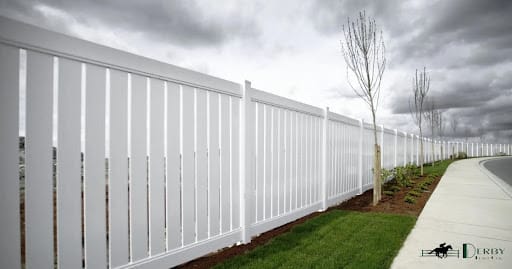Livestock and horse owners face a crucial decision when it comes to fencing materials. The traditional choices of wood and vinyl have been prevalent, but a newer contender, High-Density Polyethylene (HDPE), is gaining popularity for several compelling reasons.
1. Introduction
Livestock fencing goes beyond mere property boundaries; it ensures the safety and well-being of horses. In this article, we’ll delve into the sustainability aspects of HDPE, wood, and vinyl fencing, highlighting why HDPE emerges as a superior choice.
2. The Environmental Impact
When considering environmental impact, HDPE takes the lead. Unlike wood, which involves deforestation and vinyl, requiring harmful chemicals, HDPE is an eco-friendly alternative. It’s manufactured from recycled materials, contributing to a reduction in overall environmental footprint.
3. Durability and Longevity
HDPE outshines wood and vinyl in terms of durability. Its resistance to weather, insects, and decay ensures a longer lifespan, providing a cost-effective solution over the years.
4. Maintenance Requirements
Low-maintenance is a hallmark of HDPE fencing. While wood and vinyl demand periodic attention, HDPE stands strong without the need for extensive upkeep.
5. Cost Considerations
Though initial costs may vary, the long-term savings with HDPE make it an economically sustainable choice. Its durability and low maintenance contribute to a financially prudent investment.
6. Aesthetics and Customization
HDPE doesn’t just excel in functionality; it offers a variety of aesthetic options and customization features, enhancing the overall appeal of the fencing.
7. Safety for Livestock
The safety of animals is paramount. HDPE’s smooth surface eliminates the risks associated with splinters or harmful chemicals, ensuring a secure environment for livestock.
8. Installation Process
HDPE’s ease of installation saves both time and labor, making it a practical choice for livestock owners looking for efficiency.
9. Recyclability and Environmental Footprint
Highlighting HDPE’s recyclability emphasizes its commitment to reducing environmental impact. Wood and vinyl often fall short in this aspect.
10. Heat and Cold Resistance
In extreme temperatures, HDPE maintains its structural integrity, surpassing the performance of wood and vinyl, which may warp or crack.
11. Noise Reduction
Livestock environments benefit from HDPE’s ability to absorb sound, creating a quieter and more comfortable space.
12. Versatility in Applications
Beyond livestock, HDPE fencing finds versatile applications. It excels in scenarios where wood and vinyl may not be as adaptable.
13. Impact on Surrounding Ecosystem
Considering the local ecosystem, HDPE proves to be an environmentally conscious choice, minimizing negative impacts compared to wood and vinyl.
Traditional Options: Wood and Vinyl Fencing
Cons of Wood and Vinyl Fencing
Susceptibility to Decay
Wood fencing is prone to decay and insect damage over time, requiring regular maintenance. Vinyl, while more durable, may still face issues such as discoloration and warping.
Environmental Impact
Wood fencing contributes to deforestation, and vinyl production involves chemicals and non-renewable resources, posing environmental concerns.
Choosing HDPE: A Sustainable and Stylish Choice
In the HDPE vs. Wood and Vinyl fencing deliberation, HDPE emerges as the eco-friendly and durable solution for livestock fencing. Make the sustainable choice that stands the test of time. Upgrade to HDPE fencing today and redefine your livestock enclosures with distinction.
Elevate Your Livestock Fencing with Derby Fence Excellence
Transform your property with Derby Fence – the epitome of durability, sustainability, and style in livestock fencing. Make the eco-friendly choice that stands the test of time. Upgrade to Derby Fence today and redefine your boundaries with distinction.[/vc_column_text][/vc_column][/vc_row]


